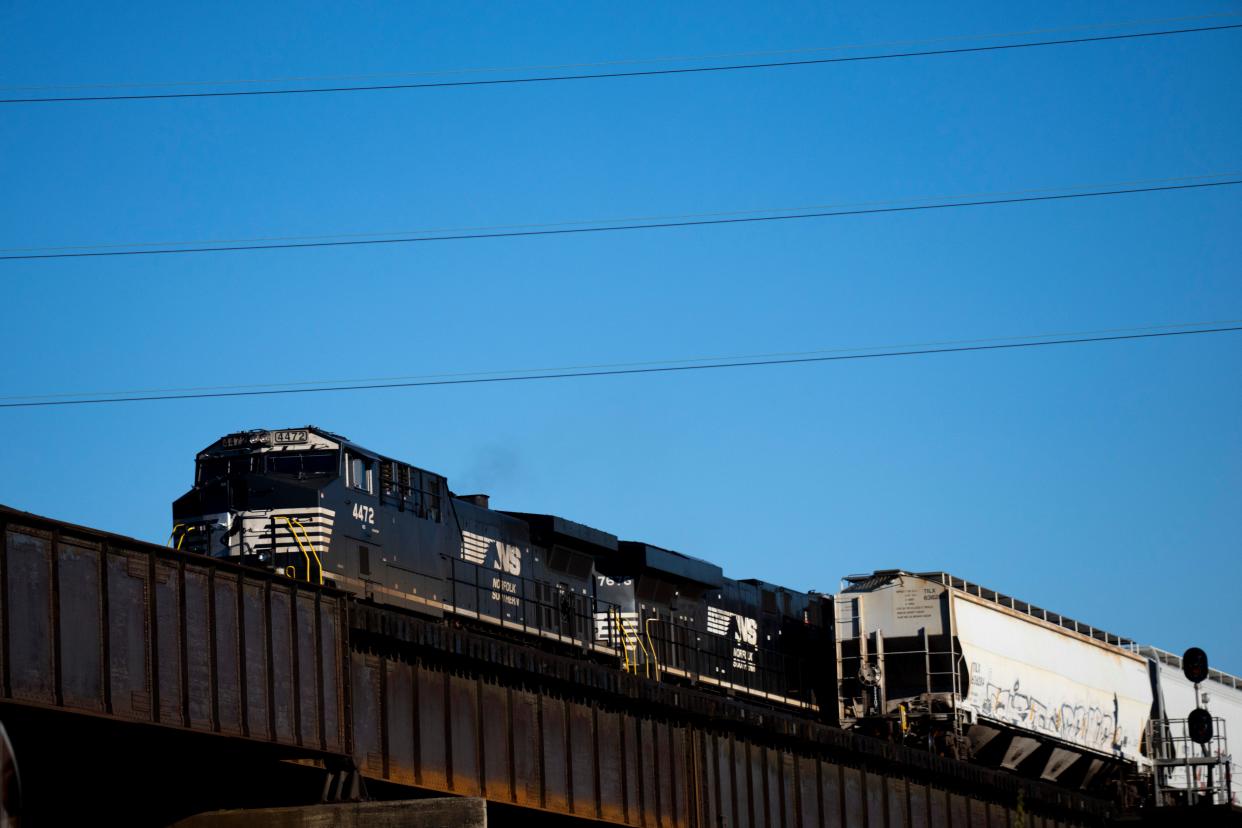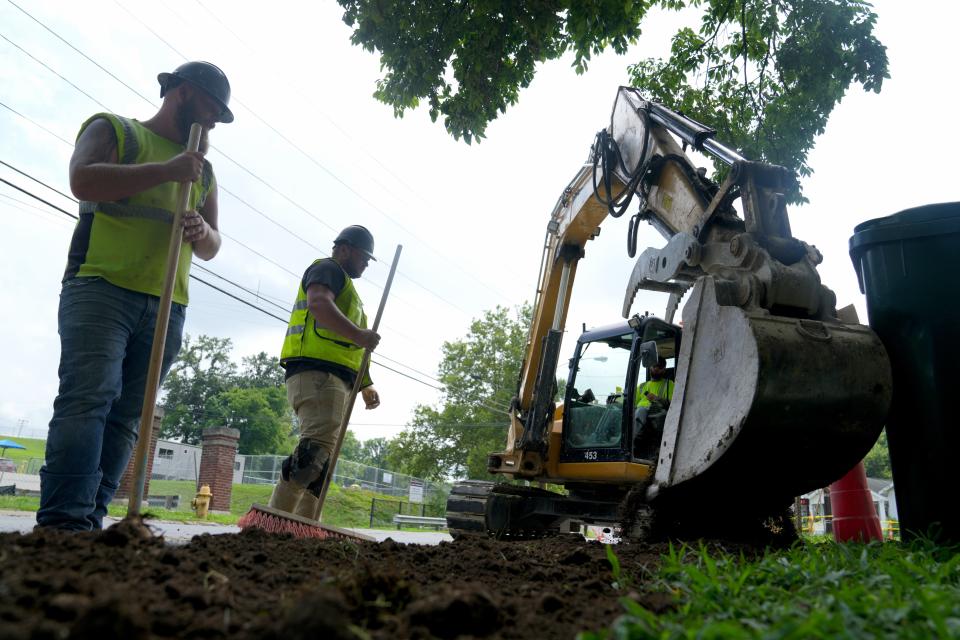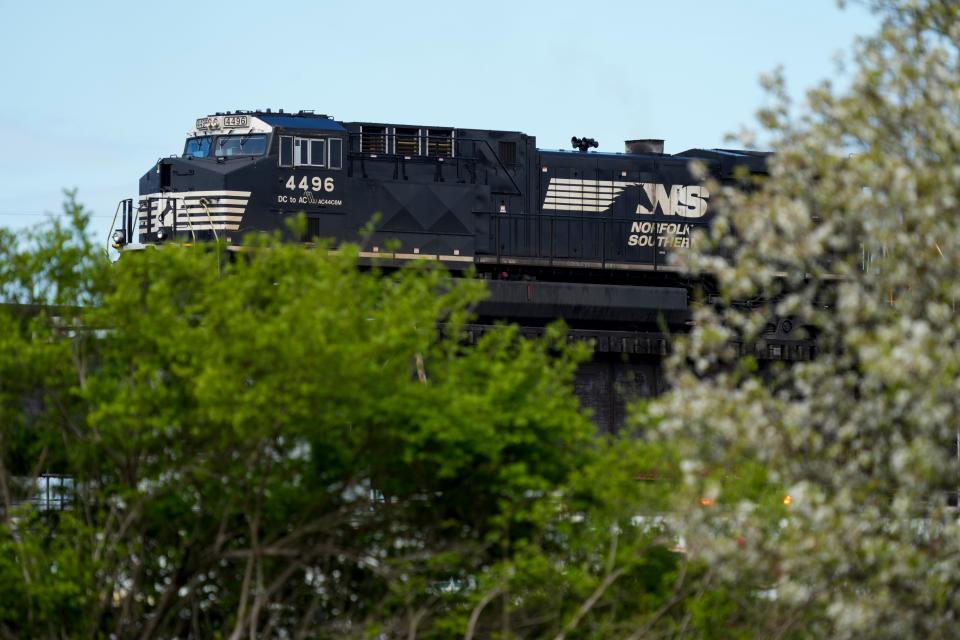Time for Cincinnati to get out of the railroad business | Editorial

Cincinnati voters should move full steam ahead by approving the sale of the nation's only municipally owned railroad in November.
Norfolk Southern Corp. has offered the city of Cincinnati $1.6 billion for the 337-mile railroad that runs to Chattanooga. Both Cincinnati City Council and the five-member Cincinnati Southern Railway Board of Trustees, which manages the asset, voted to place the proposed railroad sale on the November ballot. Voters ultimately will have the final say.
Norfolk Southern currently leases the railroad for $25 million a year, but that lease ends in 2026. City officials and the railway board say the sale would allow the city to double that annual revenue at a minimum. The $1.6 billion would be placed in a trust fund with a goal to forward an annual payment to the city from investment returns. The principal would not be touched and funds could only be used on existing infrastructure projects such as roads, bridges, parks and city facilities. Estimates of the investment income the city could receive range from $50 million to $70 million a year.
That's money our cash-strapped city could certainly use as it faces a $30 million general fund deficit next year and $400 million in deferred maintenance, including $70 million in needed fixes at Cincinnati parks. Mayor Aftab Pureval said the city's current financial situation is unsustainable, and the decision whether to sell the railroad now will have an impact, positively or negatively, on the city for the next 150 years. If the city doesn't sell now, Pureval said, it could be another quarter century before this opportunity comes again, as Norfolk Southern would simply extent its lease for another 25 years at much less than $50 annually.

"Nobody wanted to be the one to sell the railroad, but we can no longer kick the can down the road on parks, roads and bridges," Pureval said during a July meeting with the editorial board. "We have to solidify our fiscal health. It's a massive decision."
More: Why Cincinnati City Council voted to sell the Cincinnati Southern Railway
The city's financial woes have been worsened by the loss of $8 million in tax revenue due to remote work during and post-pandemic. Pureval said the city has been able to stay afloat mostly thanks to dollars from the American Rescue Plan Act, but now officials must focus on diversifying the city's income so it's not so reliant on earnings or other taxes on residents. Selling the railroad is that avenue, he said.
It's natural to wonder whether the city is getting the best deal. If Norfolk Southern is willing to pay $1.6 billion, what might the railroad actually be worth? How much will it be worth in 10, 20 or 30 years? City officials and railway board members acknowledged that placing a true value on the railroad is difficult. But not knowing whether this is the best possible deal doesn't mean it's not a good deal.
Here's why Cincinnati should take the money and get out of the railroad business:
Basic services would be greatly improved

Let's face it, the city desperately needs an infusion of cash to dig out of a financial hole. Selling the railroad is not only a good way for the city to get that money now, but to generate much more than the $25 million it gets annually from the lease for many years to come.
Material and labor costs are going to continue to rise on maintenance projects that are already running years behind. Without some way to generate extra dollars to keep up with inflation and catch up on deferred maintenance, the city will fall further behind as our infrastructure becomes more decrepit and unsafe.
Conservative estimates of a 3.5% return on the $1.6 billion investment would net the city about $57 million a year, city and railway board officials said. But those returns could be even higher.
We like the fact that the mayor and council aren't just thinking about the next 10 years, but the next 100. A failure to anticipate and plan for rising costs is how past administrations and councils could borrow $100 million to repair crumbling city streets and eight years later, city streets are in worse shape. Pureval and this council appear to be thinking ahead about how to bring the city's infrastructure up to standards for the long haul.
Plus, selling the railroad would prevent any possible tax increases to make up for deficits in the capital fund, the mayor said.
Norfolk Southern values Cincinnati's railroad the most

Norfolk Southern already owns railway lines that go from Chicago to Cincinnati and Chattanooga to Atlanta. Cincinnati's railway is the connector between those two lines to the north and south. It would make little business sense for another company to have as much or more interest in Cincinnati's railway than Norfolk Southern. And even if Cincinnati did court other suitors, Norfolk Southern's existing lease agreement grants them right of first refusal on any sale of the railroad.
Norfolk Southern has told city officials and the railway board that they won't overpay to lease the railroad, but they would overpay to buy it. And the city can't simply up the annual lease price to any amount it wants because such negotiations are typically settled through arbitration. In other words, we don't know if $1.6 billion reflects the true value of the railroad, but we do know it's the best deal the city and railway board could get from a buyer whose in the best position to value it the highest.
Cincinnati can divorce itself from a 'risky partner'

After Norfolk Southern's disastrous handling of a train derailment in East Palestine, Ohio earlier this year, hardly anyone in Cincinnati can be excited about continuing to be in business with the company. Should such a tragedy occur along the city-owned railway, the city, along with Norfolk Southern, could face liability from class-action lawsuits. Further, the city has no ability to regulate or manage Norfolk Southern − that's the purview of the federal government. So the city has no say over labor or safety standards and Norfolk Southern doesn't even have to alert the city when it's transporting hazardous materials along the route. Selling the railroad won't change any of those facts, but it would absolve the city of any liability if an East Palestine-like accident were to happen here.
Ample safeguards exist to protect the $1.6 billion

We don't trust future mayors or city councils anymore than most people do. However, the Ohio Legislature − with significant involvement from Greater Cincinnati's local representatives − has put sufficient guardrails in place to make sure that city officials don't kill the golden goose.
City officials can only use the funds to pave existing roads, maintain bridges or fix up buildings in disrepair like the city's fleet garage. That means politicians can't spend the money on future pet projects.
State lawmakers also required that the trust fund created from the sale remains solvent. If the fund principal dips to 75% or below the $1.6 billion sale value − or $1.2 billion − then payments to the city freeze until the fund reaches $1.6 billion again. If the trust grows higher than $1.6 billion, that amount becomes the new high bar for 75% of it to freeze spending.
And of course, you, the voters, are the ultimate check on city government. If future mayors or councils lack discipline or abuse the process, Cincinnatians can sue or vote them out.
We understand the argument that the city and taxpayers risk losing out on the potential that the value of the railroad will increase, but that's true of almost any sale of property. The sale seems like a good hedge against the potential that the value of railroads goes down over time due to technological advances. The industry as a whole has continued to struggle since the pandemic, several Class 1 freight railroads have recently gone bankrupt and rail traffic on the CSR line has gone down in the past two years.
It will be incumbent for the mayor and council to hire a high-level professional financial director to oversee the trust fund and its investments. The railway board also will need to be filled with talented and experienced people with backgrounds in financial management. The process for making those appointments should be open and transparent so as to maintain public confidence.
Lastly, we are pleased that the decision was made to put this before the voters in a November election rather than a primary. That's the right approach because it gives the largest possible number of city voters the final say.
It's not 1870 anymore, and the city really has no business owning a railroad. The fact that we are the only city that owns its railroad is a quirk of history, and it's perfectly fine for that era to come to an end.
Opinion and Engagement Editor Kevin S. Aldridge writes this on behalf of The Enquirer's editorial board, which includes Editor Beryl Love, Senior News Director of Content Jackie Borchardt and community board members Rachel Citak, Jackie Congedo and Mack Mariani.

This article originally appeared on Cincinnati Enquirer: Time for Cincinnati to get out of the railroad business | Editorial

